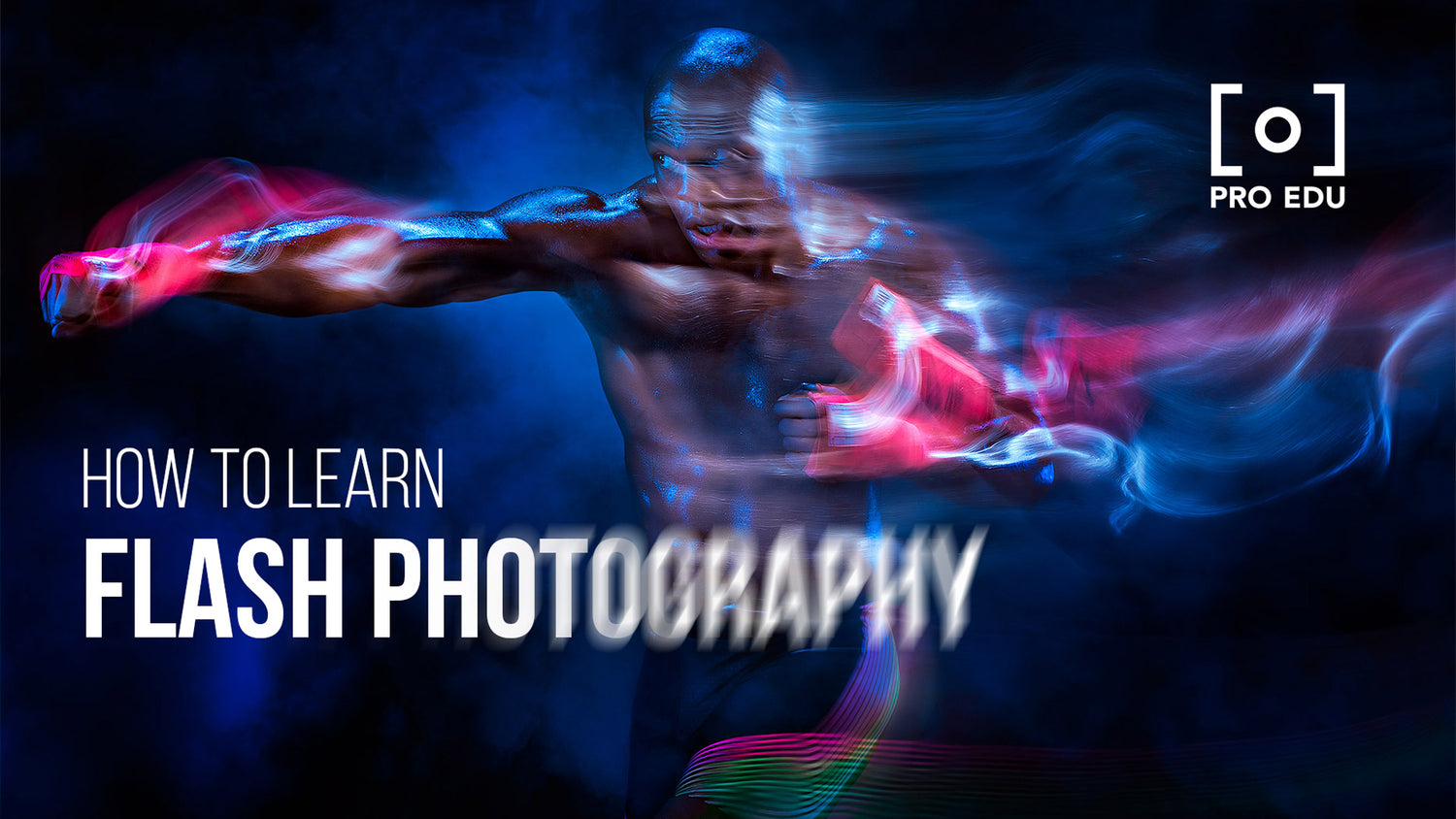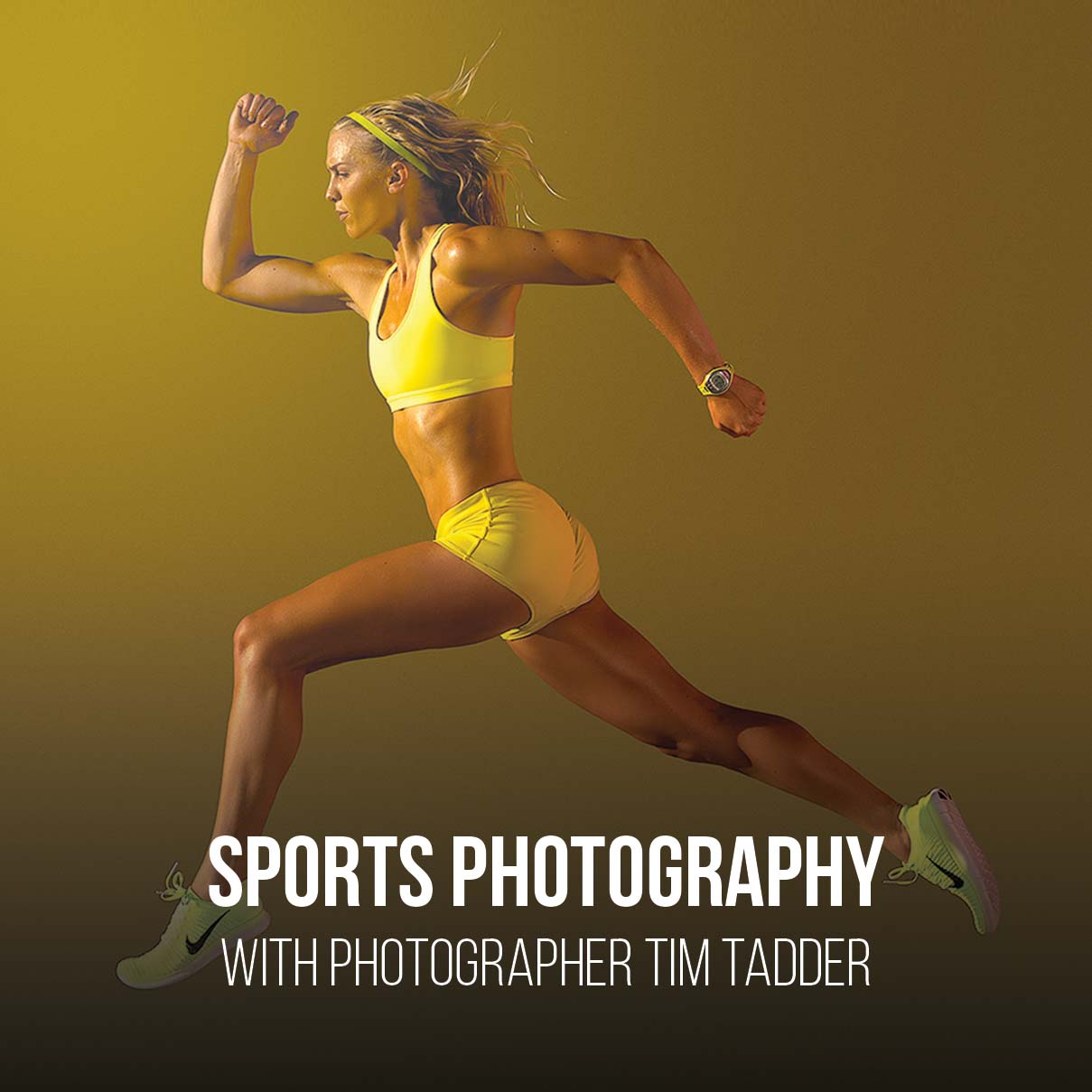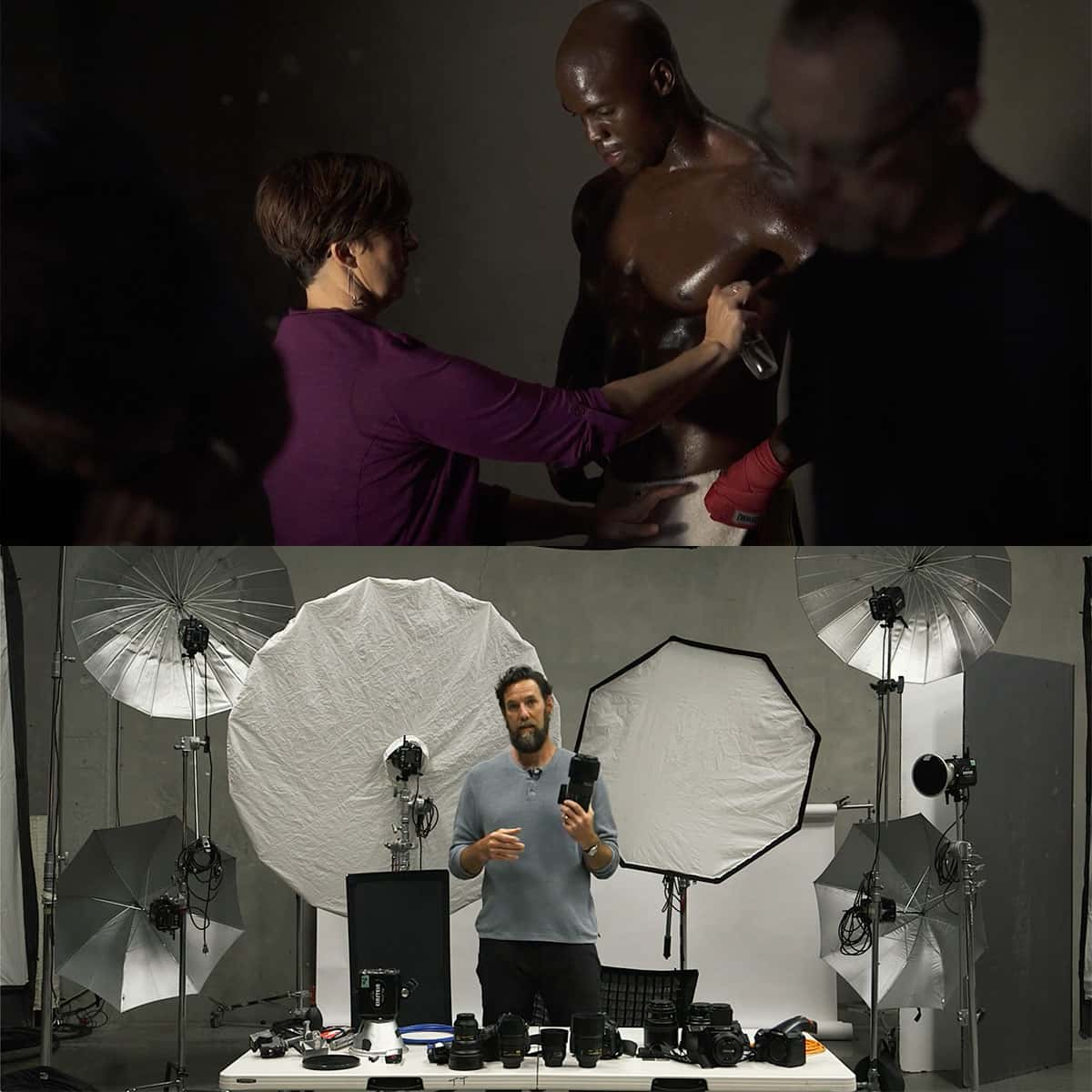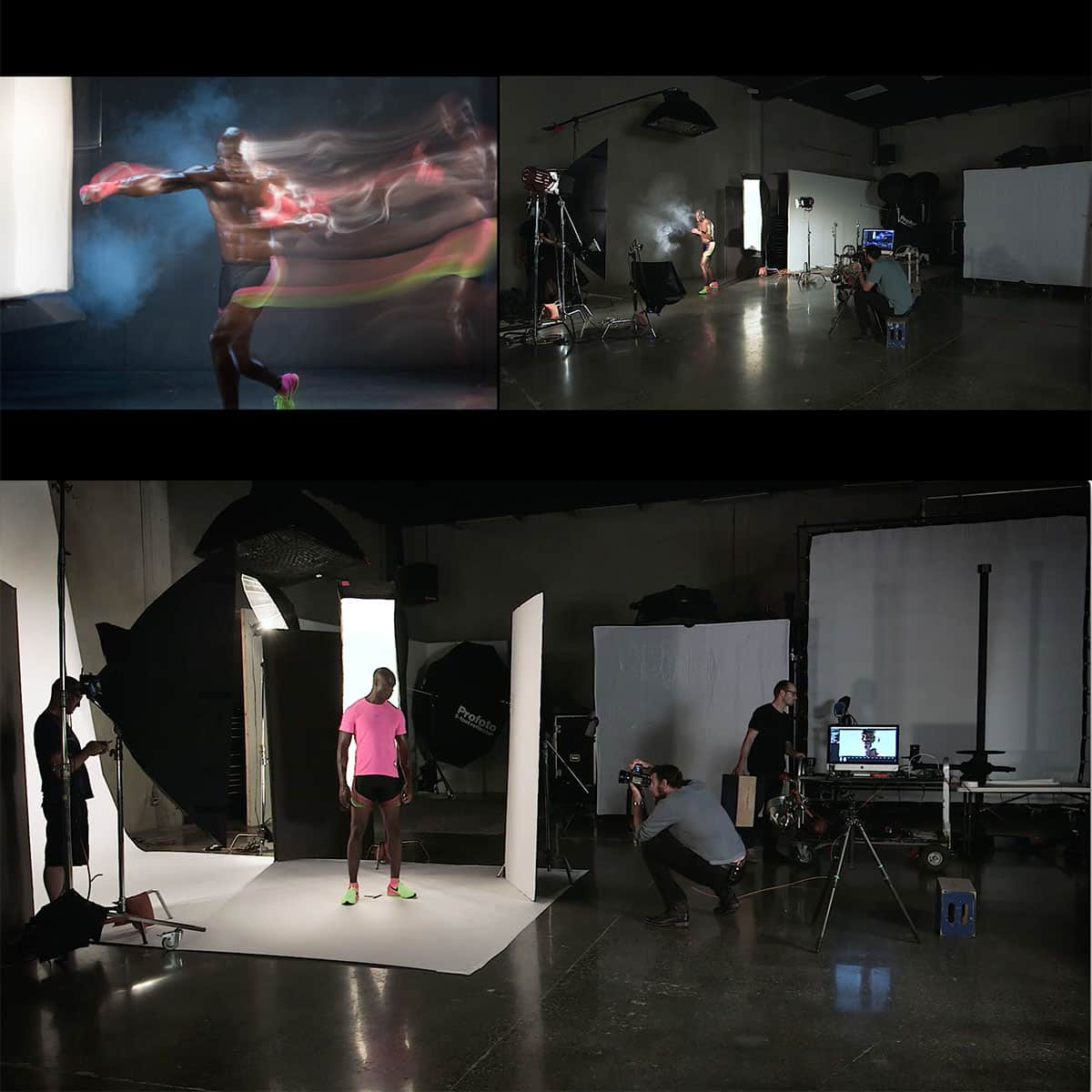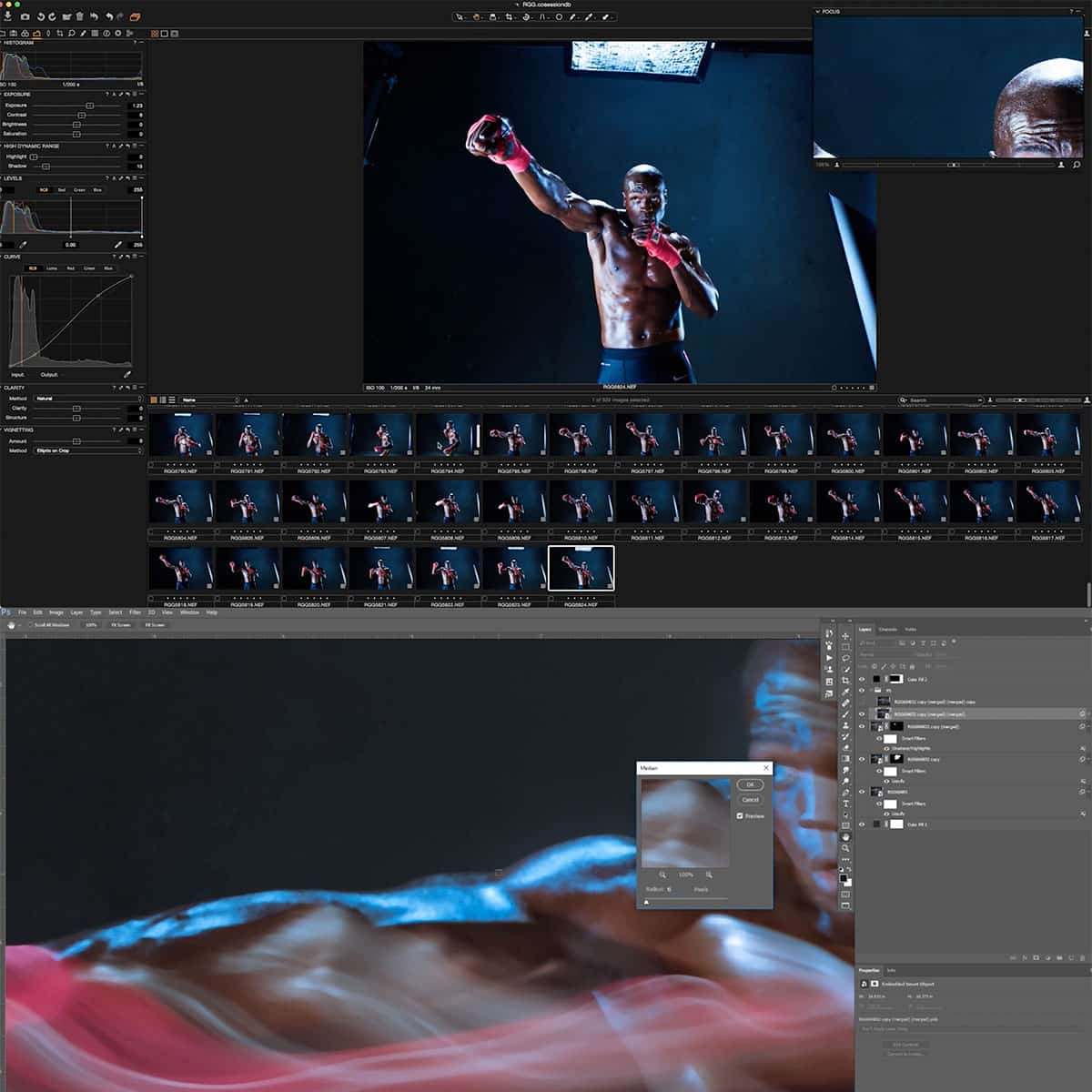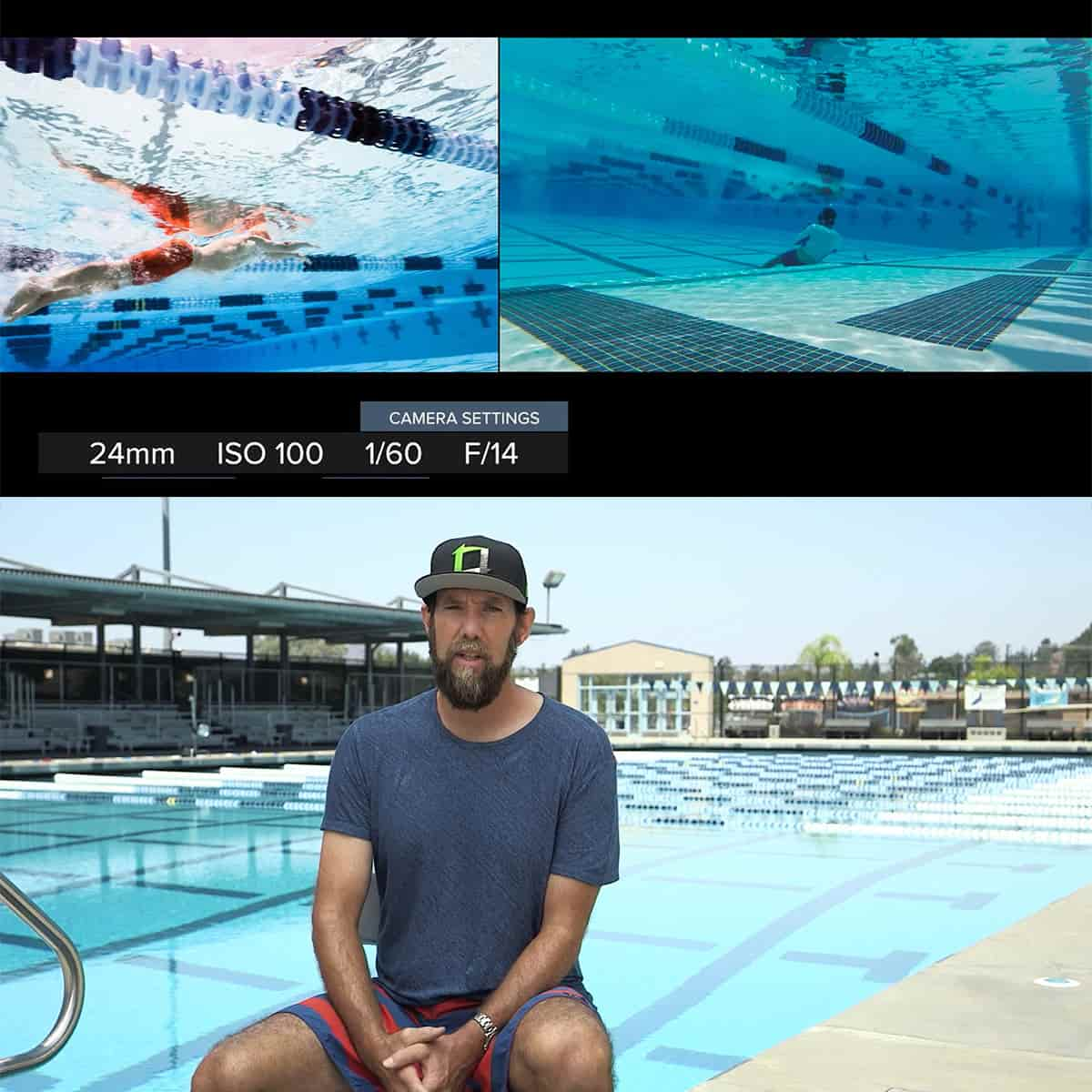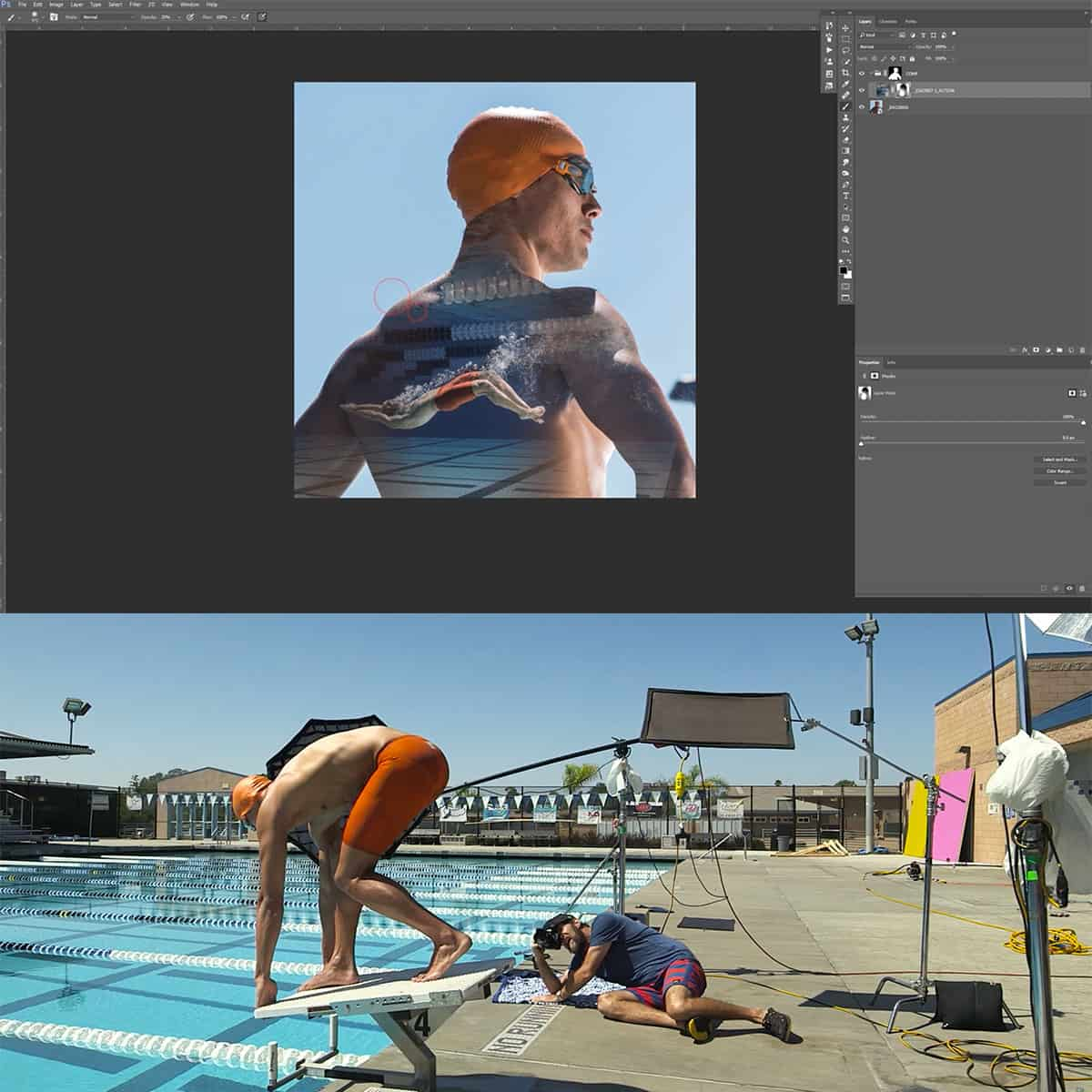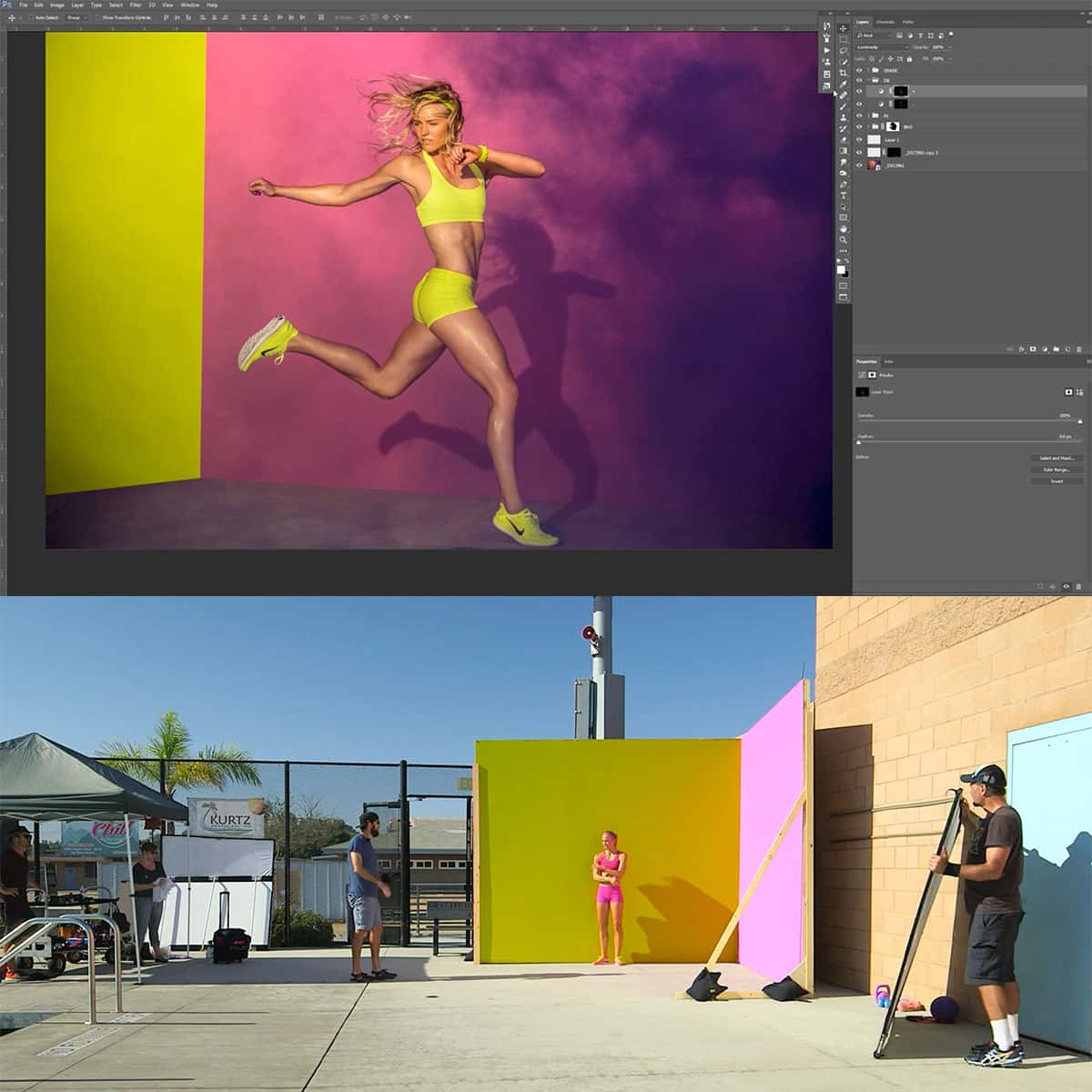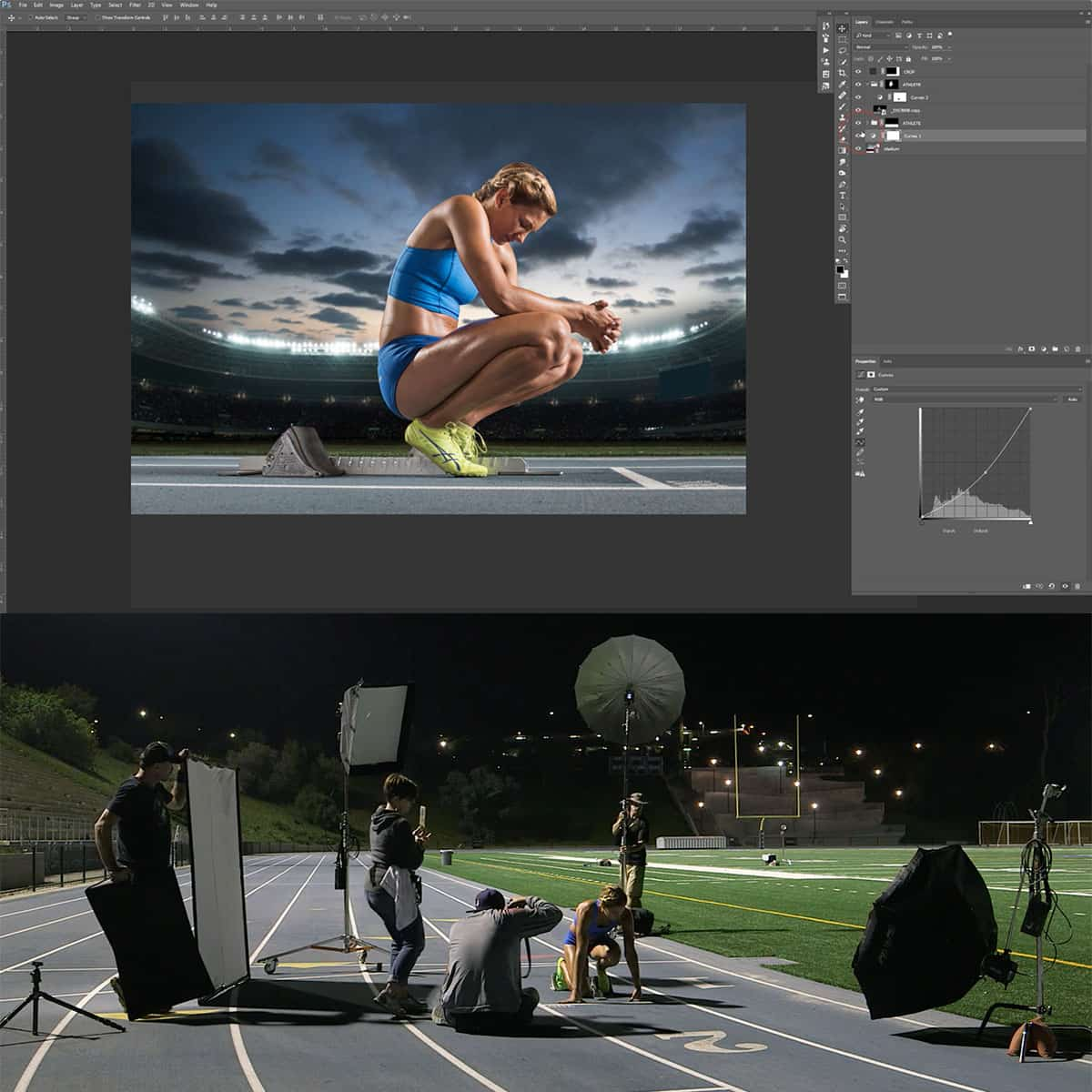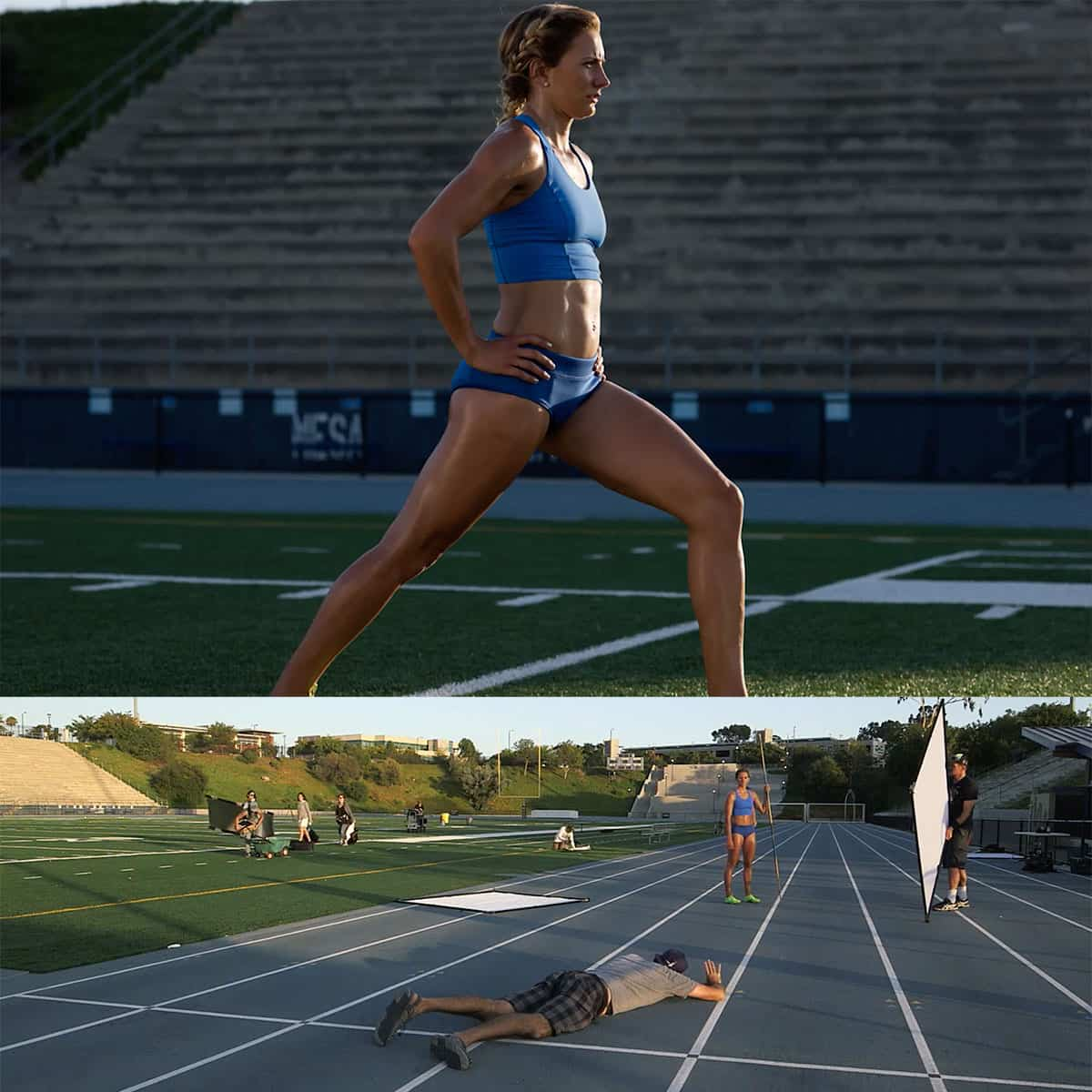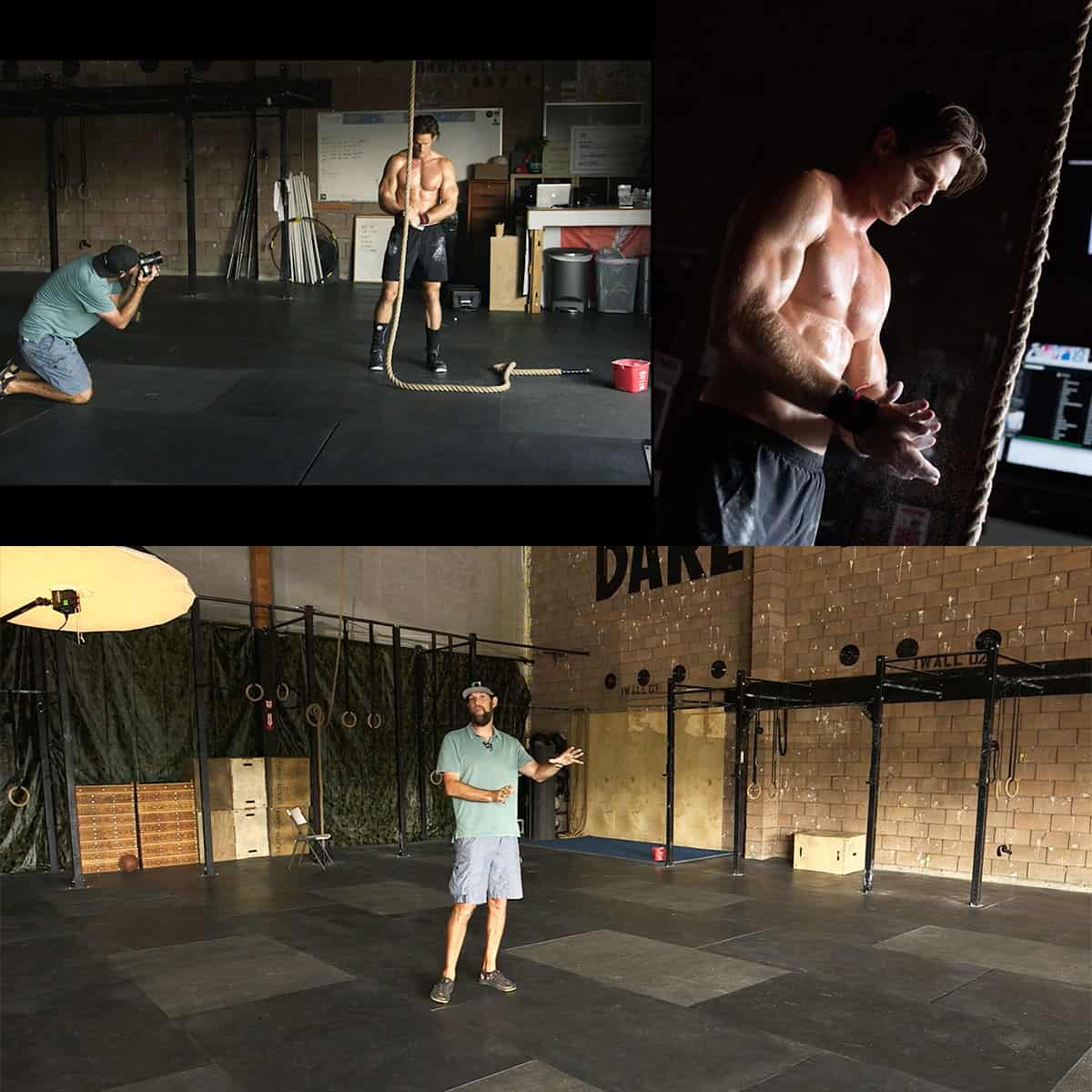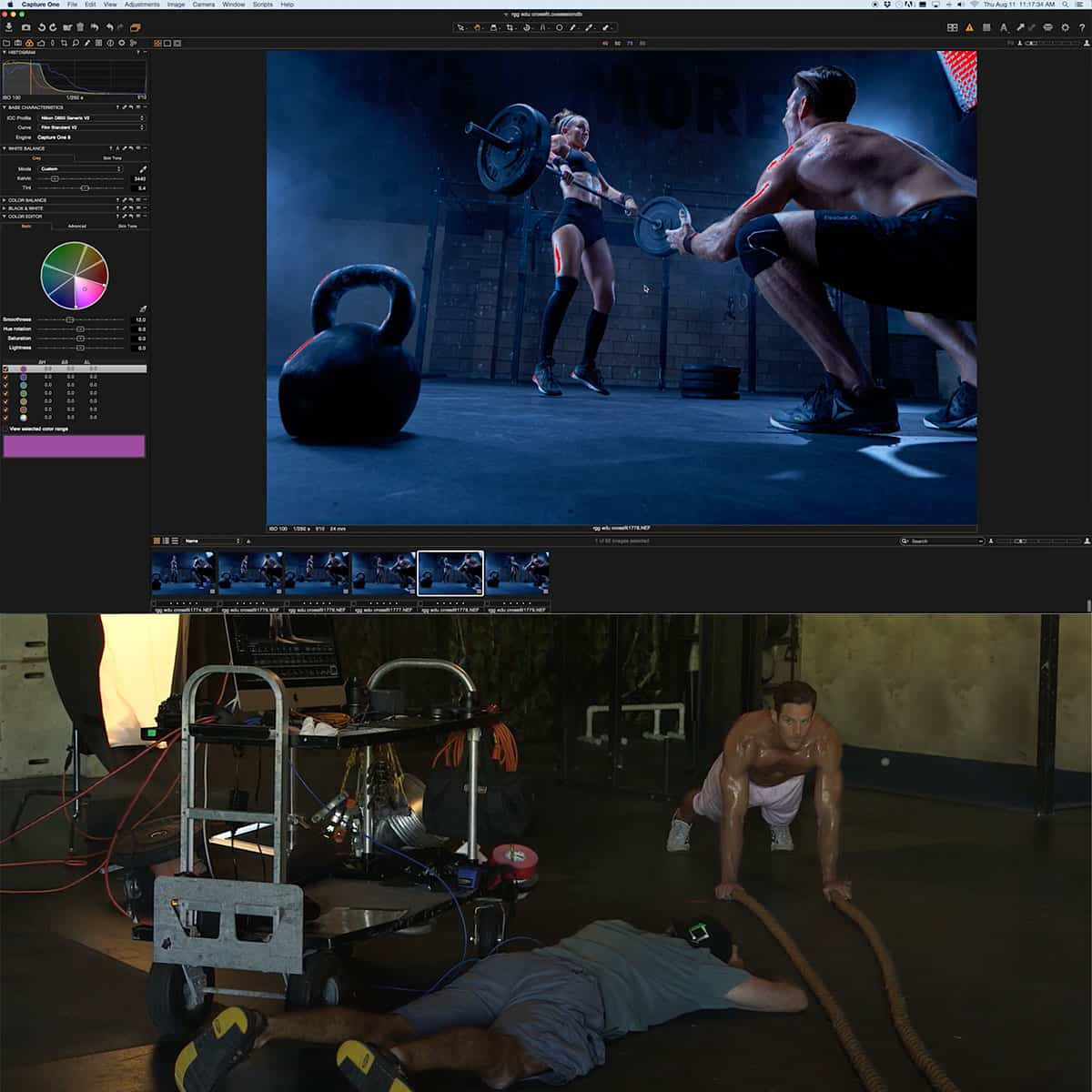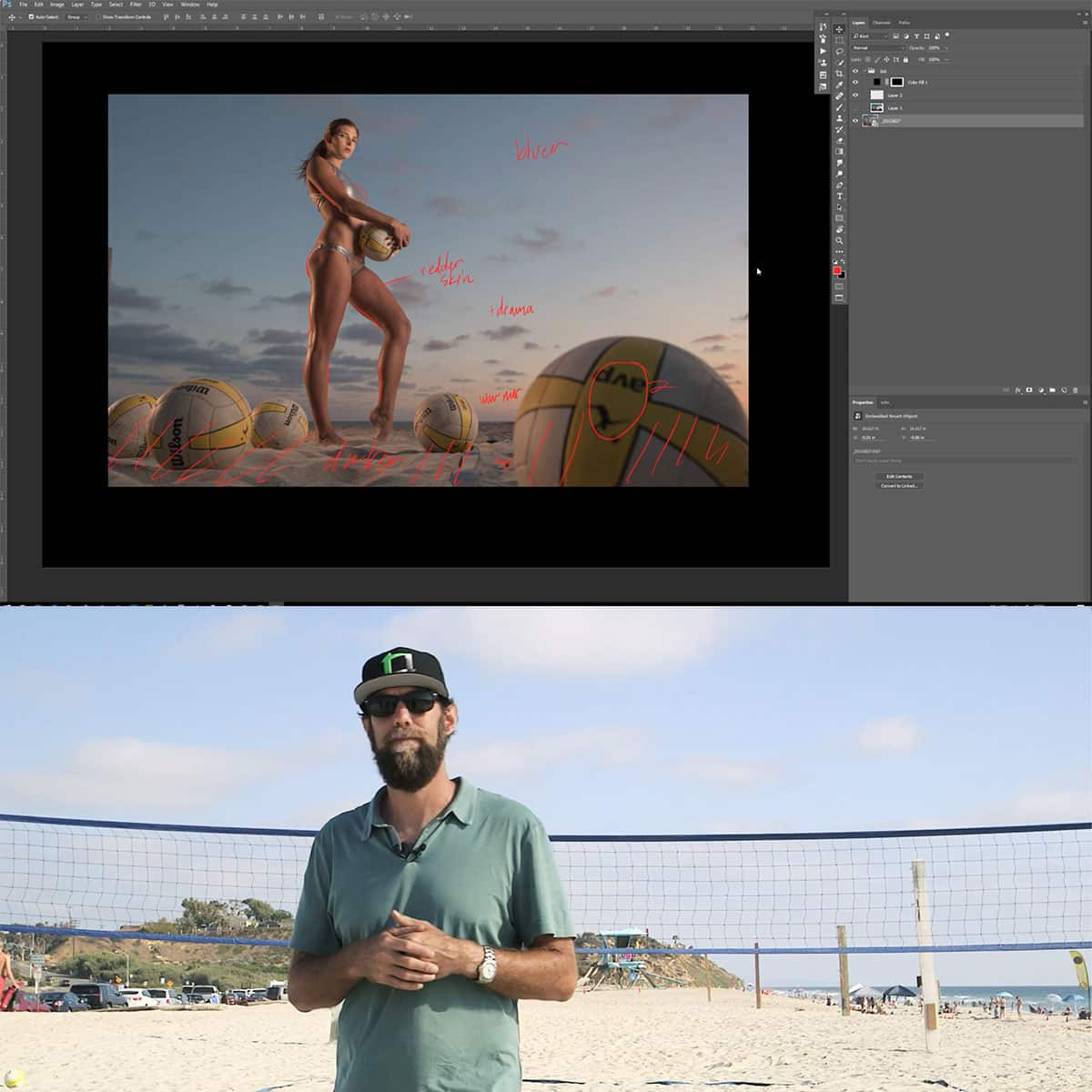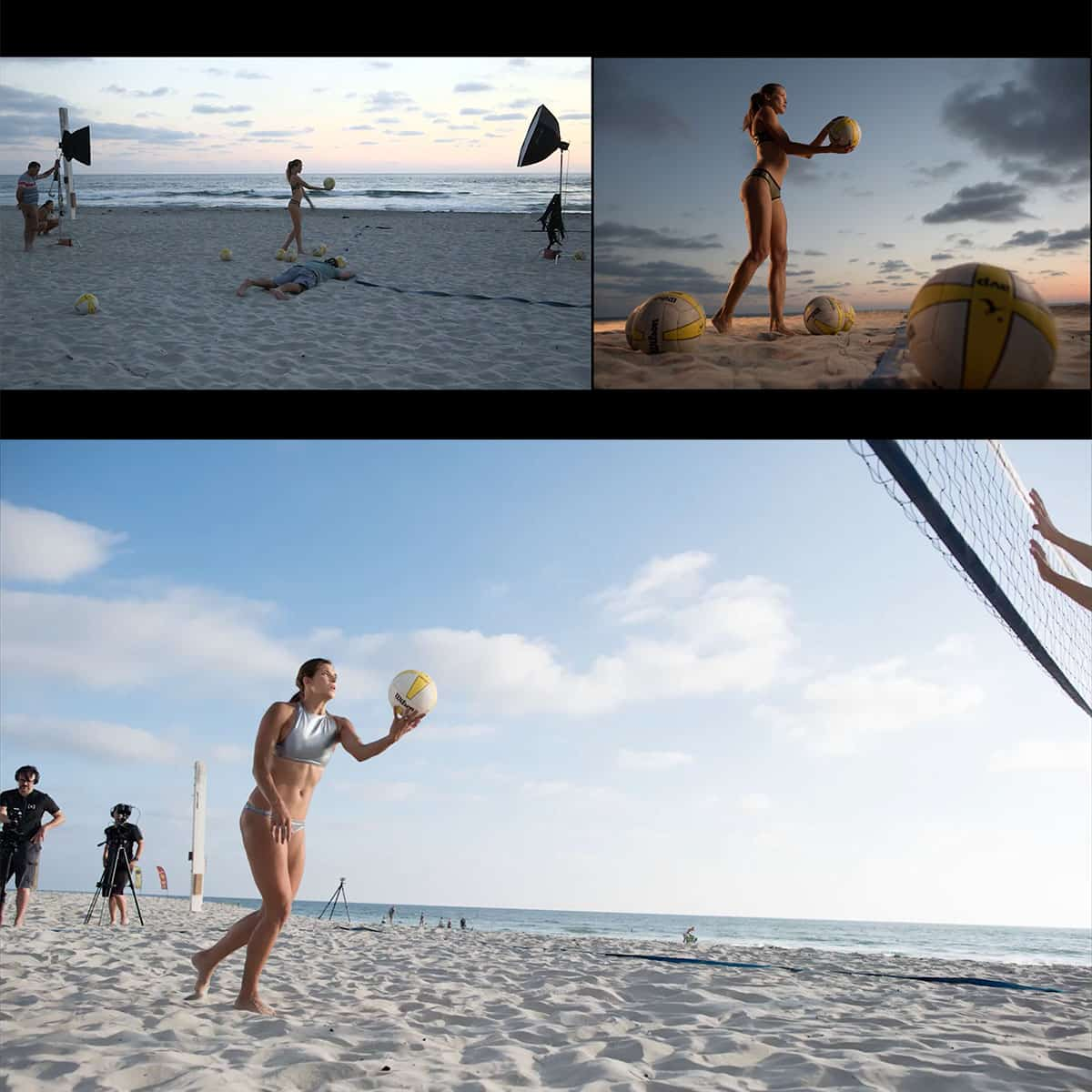En tant que photographes, nous sommes souvent à la merci de la lumière disponible. Qu'il s'agisse du soleil de midi ou d'un événement faiblement éclairé, les défis de l'éclairage peuvent faire ou défaire une photographie. C'est là que la photographie au flash entre en jeu, offrant un niveau de contrôle et de créativité que la lumière naturelle ne peut tout simplement pas égaler. Apprendre la photographie au flash nous permet de contrôler et de modifier la lumière, garantissant des sujets bien éclairés et les effets souhaités, quelles que soient les conditions ambiantes.
Les sujets de cette vidéo incluent comment faire rebondir la lumière, les réglages de l'appareil photo, la photographie au flash, la puissance du flash, les vitesses d'obturation, la griffe porte-accessoire, les flashs, le flash manuel, la vitesse de synchronisation du flash, le mode TTL, le flash intégré des appareils photo, l'éclairage ambiant, les modes manuels, les flashs intégrés, la profondeur de champ, les conditions d'éclairage, la vitesse d'obturation plus lente, la source lumineuse, la synchronisation maximale du flash, l'exposition au flash.
Maîtriser la photographie au flash ne consiste pas seulement à comprendre votre équipement, mais aussi à exploiter la puissance de la lumière pour améliorer et transformer vos images. Du flash d'appoint qui illumine les ombres lors d'une journée ensoleillée à une configuration multi-flash qui sculpte la lumière dans un portrait en studio, le flash peut être l'outil qui élève votre photographie de bonne à excellente. En investissant du temps dans l'apprentissage de l'utilisation d'un flash, les photographes se dotent d'un ensemble de compétences inestimables qui ouvrent un nouveau monde de possibilités photographiques.
Principaux points à retenir
- La photographie au flash améliore la qualité de l'image dans des conditions d'éclairage difficiles.
- La maîtrise des techniques de flash permet l'expression créative en photographie.
- Comprendre et pratiquer le flash peut améliorer considérablement les résultats photographiques.
Dans cette section, nous aborderons les aspects fondamentaux de la photographie au flash, essentiels pour capturer des photos bien éclairées. Des rôles du flash en photographie aux paramètres qui le régissent, nous couvrons les éléments essentiels dont vous aurez besoin lors de ce voyage éclairant.
Le rôle du flash en photographie
Le flash joue un rôle essentiel en photographie, car il fournit la lumière nécessaire lorsque la lumière ambiante est insuffisante. Il permet de figer le mouvement, ce qui nous permet de capturer des images nettes, et peut être utilisé pour créer des effets dramatiques ou combler les ombres lorsque la lumière du soleil est trop forte.
Types d'équipements flash
Les flashs se présentent sous différentes formes, chacune adaptée à différentes situations. Le flash est polyvalent et peut être monté sur la griffe porte-accessoire d'un appareil photo reflex numérique ou hybride . Les flashs déportés offrent plus de contrôle et de créativité, tandis qu'un flash annulaire fournit un éclairage uniforme, idéal pour la macrophotographie ou les portraits. Les têtes de flash sont plus grandes et principalement utilisées en studio.
Paramètres de l'appareil photo et du flash
Pour un résultat optimal, nous devons synchroniser les paramètres de notre appareil photo avec le flash. En mode manuel , nous avons un contrôle total sur l'ouverture, la vitesse d'obturation et les paramètres ISO , tandis que le mode automatique ajuste les paramètres en fonction de la lumière ambiante. Les paramètres du flash doivent également être ajustés en fonction de l' exposition et de l'effet souhaités.
Maîtriser l'exposition et la lumière
Pour obtenir la bonne exposition, il faut trouver le juste équilibre entre l'ouverture, la vitesse d'obturation et les réglages ISO . Nous utilisons un posemètre pour mesurer l'exposition ambiante. Le réglage de la puissance du flash en fonction de la lumière ambiante est essentiel, que nous travaillions avec la lumière naturelle ou la lumière du soleil en combinaison avec notre flash.
Comprendre la puissance et la qualité du flash
La qualité de la lumière est déterminée par la puissance du flash et le modificateur utilisé. Une lumière douce est obtenue grâce à une lumière diffuse , qui peut adoucir les ombres. À l'inverse, un flash direct crée une lumière dure avec des ombres plus nettes. Nous devons également tenir compte de la température de couleur pour nous assurer que le flash complète les conditions d'éclairage ambiant.
Techniques essentielles de photographie au flash
La maîtrise des techniques essentielles de photographie au flash nous permet d'éclairer magnifiquement les sujets, d'améliorer l'ambiance et de réduire les problèmes courants comme les yeux rouges. Prendre le contrôle de la direction et de la qualité de la lumière peut vraiment améliorer nos résultats photographiques.
Technique du flash rebondissant
Le flash indirect consiste à orienter notre flash vers des surfaces telles que des plafonds ou des murs plutôt que directement vers notre sujet. Cela crée un effet de lumière indirecte qui imite la lumière naturelle, ce qui donne un aspect plus doux et plus diffus. Pour utiliser efficacement la technique du flash indirect, nous devons tenir compte de la couleur et de la texture de la surface indirecte, car elles peuvent avoir un impact sur la température de couleur et la douceur de la lumière.
Utilisation du flash en basse lumière
Dans des conditions de faible luminosité , la photographie au flash devient précieuse. Lorsque la lumière ambiante est insuffisante, l'utilisation du flash peut éclairer notre sujet sans trop éclaircir toute la scène. Pour maintenir un équilibre entre le flash et la lumière ambiante , nous pouvons ajuster les paramètres de notre appareil photo comme l'ISO, l'ouverture et la vitesse d'obturation. Une bonne pratique consiste à utiliser un flash à synchronisation lente , ce qui nous permet de capturer efficacement à la fois le sujet et la lumière ambiante.
Contrôle de la direction et de la qualité de la lumière
Diriger la lumière là où nous le souhaitons est essentiel. En utilisant des modificateurs tels qu'une softbox , une grille ou un diffuseur , nous pouvons sculpter la direction et la qualité de la lumière. Utilisez une softbox pour une lumière plus large et plus douce, semblable à celle d'une fenêtre. Une grille peut concentrer la lumière dans un faisceau plus serré pour un effet spectaculaire, tandis qu'un diffuseur diffuse la lumière, réduisant ainsi les ombres dures, un élément indispensable pour créer une lumière de remplissage flatteuse et contrôler la direction générale de la lumière .
Stratégies de réduction des yeux rouges
Pour atténuer l' effet yeux rouges , qui se produit lorsque le flash se reflète sur les vaisseaux sanguins de la rétine, nous utilisons plusieurs stratégies. Le fait de surélever le flash au-dessus de l'objectif de l'appareil photo ou d'utiliser un flash indirect peut modifier l'angle de la lumière, réduisant ainsi le risque d'yeux rouges. De plus, de nombreux appareils photo sont équipés d'un mode de réduction des yeux rouges qui émet des pré-flashs pour rétrécir les pupilles, réduisant ainsi l'effet yeux rouges. Ce mode nous aide à conserver l'aspect naturel des yeux de nos sujets.
Concepts avancés de photographie au flash
En nous aventurant dans la photographie au flash avancée, notre objectif est de maîtriser des techniques telles que l'utilisation du flash hors caméra, l'équilibrage du flash avec la lumière ambiante, la compréhension des options de synchronisation et l'utilisation de divers modificateurs de flash. Ces concepts nous permettent d'élever notre travail photographique et de prendre le contrôle de l'éclairage dans n'importe quelle situation.
Utilisation du flash hors caméra
Le flash déporté nous offre la possibilité de positionner notre source lumineuse loin de l'appareil photo, offrant ainsi une lumière plus dynamique et directionnelle . En utilisant des déclencheurs sans fil, nous pouvons déclencher nos flashs déportés à distance, ce qui permet des configurations d'éclairage créatives. Nous nous appuyons souvent sur les réglages de puissance du flash et la compensation d'exposition au flash (FEC) pour régler finement l'intensité lumineuse afin d'obtenir l'effet souhaité.
Équilibrer le flash avec la lumière ambiante
Notre objectif en équilibrant le flash avec la lumière ambiante est de créer une scène d'apparence naturelle où les sources de lumière semblent homogènes. Pour ce faire, nous ajustons fréquemment la vitesse d'obturation de notre appareil photo pour contrôler l'exposition ambiante, tout en utilisant la compensation d'exposition sur le flash pour réguler la contribution du flash. Le résultat final doit être un sujet bien éclairé avec un arrière-plan qui reste visible et correctement exposé.
Options de synchronisation Flash
Il est essentiel de comprendre la synchronisation du flash pour garantir que notre flash se déclenche au bon moment. L'utilisation d'un déclencheur de flash est une pratique courante pour synchroniser notre appareil photo avec notre flash. Des options telles que la synchronisation à grande vitesse (HSS) nous permettent de prendre des photos avec des vitesses d'obturation rapides qui dépassent la vitesse de synchronisation de l'appareil photo, ce qui est utile pour figer l'action, même dans des conditions de forte luminosité. Connaître le numéro guide du flash peut nous aider à déterminer les bons réglages de puissance pour notre flash afin d'obtenir l'exposition correcte.
Travailler avec les modificateurs Flash
Les modificateurs de flash comme les softbox , les grilles et les diffuseurs sont des accessoires essentiels pour modifier la qualité de la lumière. Une softbox adoucit et agrandit la source de lumière pour des portraits plus flatteurs , tandis qu'une grille concentre le faisceau pour un effet spectaculaire. L'utilisation d'un diffuseur peut diffuser la lumière, réduisant ainsi les ombres dures. Nous sélectionnons nos modificateurs en fonction du sujet et de l'ambiance que nous souhaitons transmettre dans nos photographies.
Matériel et accessoires pour la photographie au flash
Choisir le bon équipement et les bons accessoires est essentiel pour maîtriser la photographie au flash. Nous examinerons l'équipement essentiel nécessaire pour utiliser efficacement le flash, vous offrant la flexibilité de travailler dans différents scénarios d'éclairage et d'améliorer vos photos avec précision.
Choisir le bon équipement de flash
Les appareils photo reflex numériques et hybrides sont souvent équipés d'un flash intégré , mais pour plus de puissance et de contrôle, il est recommandé d'utiliser un flash externe ou un speedlight . Lorsque vous les sélectionnez, tenez compte de la puissance du flash , mesurée en nombres guides (GN), et du temps de recyclage, car ces facteurs influencent l'intensité et la fréquence de vos prises de vue. Il est essentiel de garantir la compatibilité entre le flash de l'appareil photo et votre appareil photo reflex numérique ou hybride spécifique.
Utilisation de réflecteurs et de modificateurs
Les modificateurs tels que les boîtes à lumière , les réflecteurs et les diffuseurs sont essentiels pour façonner et adoucir la lumière de votre flash. L'utilisation d'une technique de flash indirect avec un réflecteur peut réduire les ombres et créer un aspect plus naturel. Accessoires tels que :
- Softbox : Agrandit et diffuse la lumière.
- Diffuseur : Diffuse la lumière pour diminuer la dureté.
- Réflecteur : fait rebondir la lumière pour combler les ombres.
Ce sont des outils que nous utilisons pour obtenir les effets d’éclairage souhaités.
Mise à niveau de votre appareil photo pour l'utilisation du flash
Pour utiliser pleinement les flashs externes, nous devrons peut-être mettre à niveau les paramètres de notre appareil photo . Cela peut signifier s'adapter à un modèle qui offre un support de griffe porte-accessoire et permet un contrôle manuel complet de l'ouverture , de la vitesse d'obturation et de l'ISO . Les anciens reflex numériques et certains appareils photo sans miroir peuvent avoir des limitations que les modèles plus récents surmontent grâce à des fonctionnalités avancées.
Découverte des déclencheurs de flash et des systèmes sans fil
Les déclencheurs de flash et les systèmes sans fil nous permettent de déclencher nos flashs à distance, offrant ainsi une grande polyvalence dans le placement du flash. Les options incluent :
- Déclencheurs sur caméra : Connexion directe via la griffe porte-accessoire.
- Déclencheurs sans fil : Offrez une liberté de mouvement sans les restrictions des câbles.
Comprendre les tubes et les ampoules flash
Le cœur du flash est le tube flash . Les ampoules flash standard sont généralement efficaces pour des milliers de flashs, mais au fil du temps, elles s'usent et affectent la température de couleur de la lumière produite. Nous vous recommandons d'avoir des tubes ou des ampoules de rechange à portée de main pour maintenir des performances constantes.
Réglage de la balance des blancs et de la couleur
La gestion de la balance des blancs et de la température des couleurs est essentielle en photographie au flash pour garantir un rendu précis des couleurs. Nous ajustons les paramètres de l'appareil photo pour qu'ils correspondent à la température de couleur du flash , garantissant ainsi que nos images ont les teintes correctes. Grâce aux paramètres de balance des blancs réglables, nous pouvons contrer la lumière plus froide du flash pour des résultats plus naturels.
En nous équipant des bons outils et des connaissances sur la façon de les utiliser, nous améliorons nos compétences en photographie au flash et produisons des images professionnelles de haute qualité.
Conseils pratiques pour la photographie de portrait au flash
Lorsque nous nous aventurons dans la photographie de portrait au flash , la maîtrise de l'éclairage est cruciale. Une pratique constante et une bonne compréhension des techniques d'éclairage peuvent transformer nos portraits plats en portraits dynamiques.
Arrangements d'éclairage pour les portraits
Pour créer des portraits convaincants, les arrangements d'éclairage sont essentiels. Un point de départ classique consiste à utiliser une boîte à lumière ou un parapluie pour produire une lumière diffuse, qui projette des ombres douces et réduit la dureté sur le sujet. Tenez compte de la direction de la lumière ; positionner la source lumineuse à un angle de 45 degrés par rapport au sujet peut donner un aspect naturel et flatteur. Pour des détails plus nets et un effet dramatique , l'éclairage latéral peut être un outil puissant. Lorsque vous utilisez un reflex numérique ou un appareil photo similaire, assurez-vous que la puissance du flash et l'ouverture sont équilibrées pour une exposition appropriée, en fonction de la profondeur de champ souhaitée.
Minimiser les ombres et la dureté
Pour minimiser les ombres peu flatteuses et la dureté de vos portraits, nous devons utiliser des modificateurs de lumière. Un réflecteur peut combler les ombres, en renvoyant la lumière sur le sujet. Il est également avantageux d'utiliser un diffuseur sur votre flash pour répartir la lumière de manière plus uniforme. Pensez à utiliser un réglage manuel du flash pour avoir un contrôle total sur la puissance du flash , ce qui nous permet d'affiner l'intensité de la lumière. Régler le flash pour qu'il rebondisse sur un plafond ou un mur blanc peut créer une source de lumière plus grande et plus douce , qui enveloppe notre sujet et offre une qualité de lumière plus uniforme.
Techniques créatives pour des portraits uniques
L'exploration de techniques de flash créatives peut donner à nos portraits un aspect unique. Expérimentez avec des gels pour modifier la température de couleur et l'ambiance de la photo. Un snoot ou une grille peuvent diriger la lumière précisément là où nous le souhaitons, ajoutant ainsi du caractère dramatique au portrait . Jouer avec la synchronisation à grande vitesse nous permet d'utiliser le flash en combinaison avec une vitesse d'obturation rapide, élargissant ainsi nos options créatives. N'ayez pas peur d'expérimenter avec des arrière-plans non conventionnels qui reflètent la lumière différemment, contribuant ainsi à l'atmosphère du portrait .
Conclusion
Nous avons exploré les éléments fondamentaux de la photographie au flash, et il est maintenant temps de mettre nos connaissances en pratique. Voici quelques points clés à retenir :
-
Comprendre vos outils : Il est essentiel de connaître les paramètres et les modes de votre flash. N'oubliez pas que la vitesse de synchronisation et la mesure TTL sont nos alliés pour créer des images bien exposées.
-
Gérez la lumière de manière créative : le flash est plus qu'une solution pour les situations de faible luminosité ; c'est un moyen de contrôler et de modifier l'éclairage. Nous pouvons façonner, adoucir ou intensifier la lumière selon notre vision créative.
-
Commencez simplement : il est conseillé de commencer avec un seul flash, puis d'expérimenter avec des configurations à plusieurs lumières au fur et à mesure que vos compétences s'améliorent. Avec la pratique, les techniques de flash hors caméra deviendront une seconde nature.
-
C'est en forgeant qu'on devient forgeron : comme pour toute compétence, il est essentiel de s'entraîner régulièrement. Essayez différents environnements, sujets et positions de flash pour constater par vous-même les effets qu'ils produisent sur vos photos.
En appliquant ces connaissances et en les développant sans cesse, nous améliorons notre photographie au flash. Continuons à apprendre, à expérimenter et, surtout, à profiter du voyage vers la maîtrise de l'art de la photographie au flash.
Questions fréquemment posées
Dans cette section, nous répondons aux questions courantes pour vous aider à naviguer dans les débuts de la photographie au flash, des conseils de démarrage aux techniques créatives.
Quelles sont les premières étapes pour débuter avec la photographie au flash ?
Pour débuter la photographie au flash, il est essentiel de comprendre pourquoi le flash est utilisé et ce qu'il permet d'accomplir. Nous vous recommandons de vous familiariser avec les paramètres de votre flash et de vous entraîner dans différentes conditions d'éclairage pour voir ses effets.
Quelles ressources en ligne sont les meilleures pour apprendre la photographie au flash ?
Il existe de nombreuses ressources précieuses en ligne ; pour un apprentissage structuré, profitez de tutoriels comme le Guide complet pour débutants fourni par iPhotography ou de conseils pratiques trouvés sur SLR Lounge .
Pouvez-vous recommander quelques techniques de base de photographie au flash pour les débutants ?
Pour les débutants, nous suggérons de maîtriser le flash indirect qui réduit les ombres prononcées et de s'entraîner avec les modificateurs de flash pour diffuser la lumière. Apprenez à équilibrer la lumière ambiante et celle du flash pour des photos au rendu naturel.
Comment puis-je améliorer mes compétences en photographie au flash depuis chez moi ?
La pratique est la clé de l'amélioration, alors expérimentez différents sujets et environnements à la maison. Vous pouvez également créer des défis pour vous-même ou suivre des ateliers et des tutoriels en ligne, tels que ceux proposés sur Shotkit .
Quelles sont les idées créatives pour expérimenter avec la photographie au flash ?
Jouez avec des gels colorés pour modifier la couleur de votre flash ou essayez la synchronisation sur le rideau arrière pour obtenir des effets de flou artistique. L'expérimentation avec un flash déporté peut également ouvrir un champ de possibilités créatives.
Quels paramètres d'appareil photo dois-je utiliser lorsque je travaille avec la photographie au flash ?
Pour la photographie au flash, commencez avec votre appareil photo en mode manuel pour avoir un contrôle total sur la vitesse d'obturation, l'ouverture et l'ISO. Ajustez ces paramètres en tenant compte de la puissance de sortie du flash pour l'exposition souhaitée.


